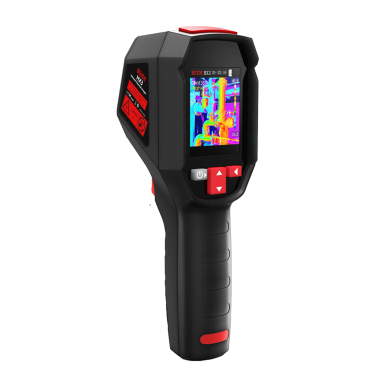Infrared Thermometer: Accurate and Non-Contact Temperature Measurement

。
# Infrared Thermometer: Accurate and Non-Contact Temperature Measurement
## Introduction to Infrared Thermometers
Infrared thermometers, also known as non-contact thermometers or laser thermometers, have revolutionized temperature measurement in various industries. These devices measure temperature by detecting the infrared energy emitted by objects, making them ideal for situations where traditional contact thermometers are impractical or unsafe.
## How Infrared Thermometers Work
Infrared thermometers operate on the principle that all objects emit infrared radiation based on their temperature. The device consists of:
– A lens to focus the infrared energy
– A detector that converts the energy into an electrical signal
– Electronics that process the signal and display the temperature
The thermometer calculates the temperature based on the amount of infrared radiation emitted by the object being measured, adjusted for the emissivity of the object’s surface.
## Key Advantages of Infrared Thermometers
### Non-Contact Measurement
The most significant advantage is the ability to measure temperature without physical contact. This feature makes them ideal for:
– Measuring moving objects
– Checking temperatures in hazardous environments
– Preventing cross-contamination in medical settings
– Measuring extremely hot or cold surfaces
### Fast and Accurate Readings
Infrared thermometers provide instant temperature readings, typically within seconds. Modern models offer accuracy within ±1°C or ±1% of reading, depending on the model and application.
### Versatility Across Industries
These devices find applications in numerous fields:
– Healthcare: For fever screening and patient monitoring
– Food service: Checking food temperatures without contamination
– HVAC: Diagnosing heating and cooling systems
– Automotive: Identifying overheating components
– Electrical: Detecting hot spots in electrical systems
## Choosing the Right Infrared Thermometer
When selecting an infrared thermometer, consider these factors:
### Distance-to-Spot Ratio
This specification indicates how far you can be from the target while maintaining an accurate reading. A higher ratio means you can measure smaller areas from greater distances.
### Temperature Range
Ensure the thermometer’s range covers your intended applications. Industrial models may measure up to 3000°F (1650°C), while medical versions typically measure up to 230°F (110°C).
### Emissivity Settings
Different materials emit infrared radiation differently. Higher-end models allow adjusting the emissivity setting for more accurate readings on various surfaces.
### Response Time
For moving objects or rapidly changing temperatures, look for models with faster response times (as quick as 150ms in some cases).
## Proper Use and Maintenance
To ensure accurate measurements:
– Keep the lens clean and free from scratches
– Allow the thermometer to acclimate to ambient temperature when moving between environments
– Be aware of environmental factors like steam, dust, or smoke that can affect readings
– Regularly calibrate the device according to manufacturer instructions
## Future Developments in Infrared Thermometry
Keyword: infrared thermometer
The technology continues to evolve with:
– Improved accuracy and smaller spot sizes
– Integration with smartphones and IoT devices
– Advanced thermal imaging capabilities
– AI-powered diagnostics for industrial applications
Infrared thermometers have become indispensable tools across many sectors, offering a safe, quick, and accurate method for temperature measurement without physical contact. As technology advances, we can expect even more sophisticated applications for this versatile measurement tool.

